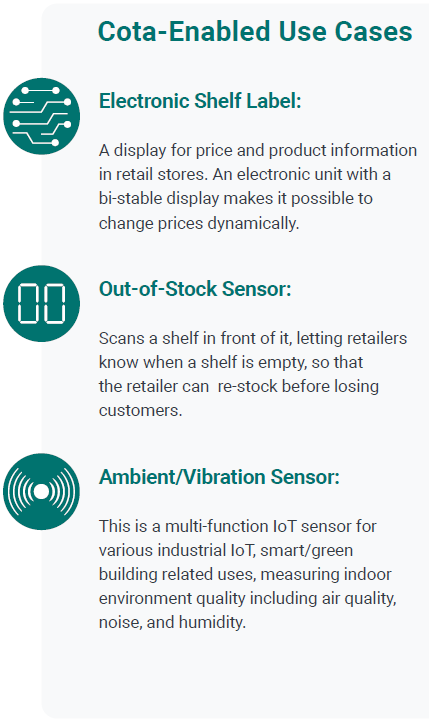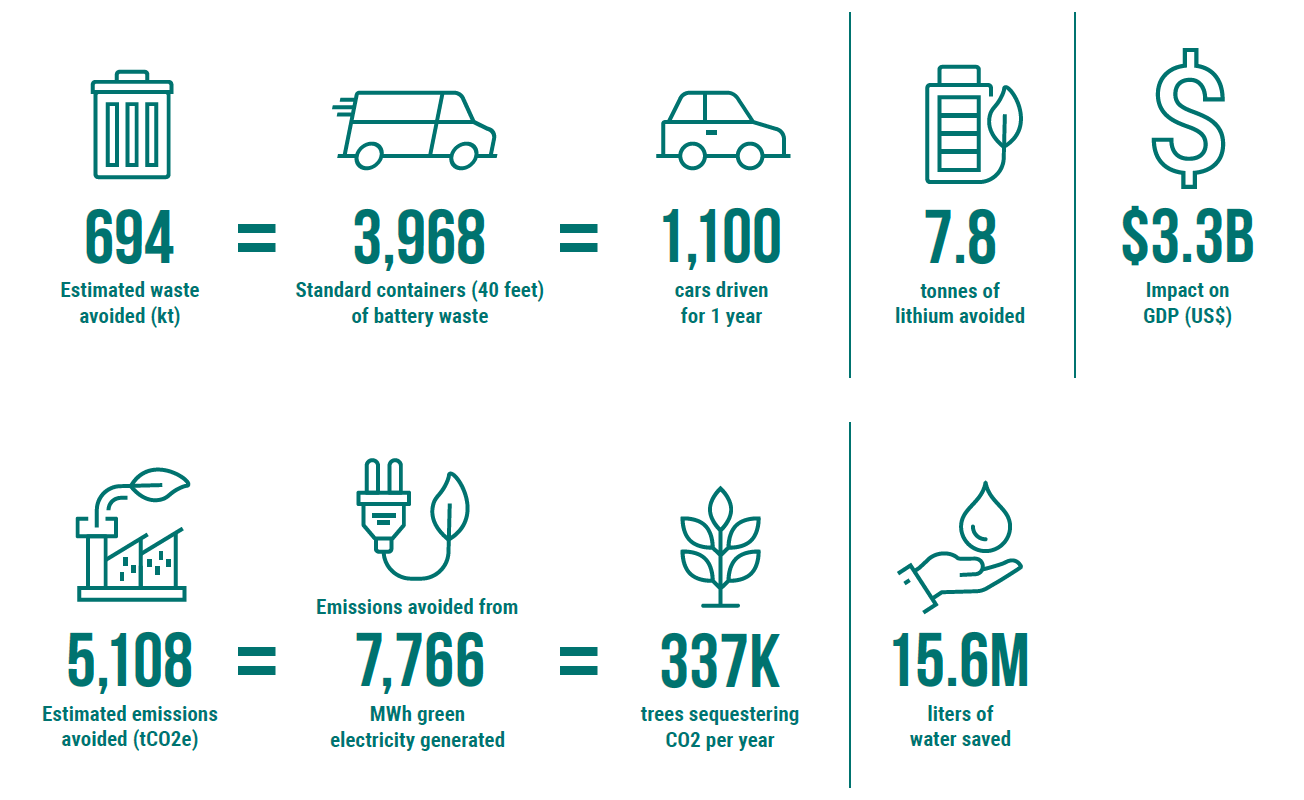Customer Story
How a Technology Firm Realized the Impact of its Wireless Power Product on Sustainability
Ossia Inc. needed a greater understanding of how its flagship product, Cota Real Wireless Power (Cota), influenced the environment, society, and the economy. While the tech company was certain of its product’s potential, it needed an external assessment of its wireless power solution under real-world conditions. Morningstar Sustainalytics conducted a Corporate Impact Report, an independent assessment that provided a detailed and quantifiable measurement of Cota’s potential impact on global sustainability through a use case analysis.
In This Customer Story:

Industry
Technology
Region
Americas

“Independent. Unbiased. Industry experts. Ossia engaged Sustainalytics, a leading provider of ESG research and ratings, to help us understand our ability to reduce battery waste and carbon emissions and increase overall GDP generation.”
Jen Grenz
Chief Revenue Officer at Ossia Inc.
The Challenge
Ossia knew its wireless power technology improved sustainability, but needed to measure, document, and understand the extent of its contribution to sustainability targets and the broader economy, using an independent ESG expert.
The Solution
Sustainalytics Corporate Impact Report provided an in-depth analysis of Cota’s ability to reduce battery waste and carbon emissions and potentially affect gross domestic product (GDP).
The Results
Ossia was finally able to communicate statistical measurements on how Cota would lower the environmental impact and costs associated with the manufacturing process of Internet of Things (IoT) devices.
About Ossia Inc.
Ossia Inc. is a privately held company, headquartered in Redmond, Washington. It is home to Cota Real Wireless Power, a technology that safely delivers targeted energy to multiple devices through the air. The company licenses its wireless charging technology to manufacturers in various industries. The technology was developed by physicist and technologist Hatem Zeine, who founded Ossia in 2008. The company now boasts more than 202 U.S. and international patents with regulatory approvals in the U.S., U.K., and over 62 other countries.
The Challenge
Determining Wireless Power's Impact on Multiple Industries
Ossia was eager to assess the benefits of its Cota Real Wireless Power technology. But with a product like Cota, which can power many electronic devices at a distance, it can be difficult to communicate to stakeholders how it works, the return on investment, and how it can impact sustainability. For Ossia, it was essential to demonstrate how Cota can be beneficial across industries, including retail, manufacturing, automotive, medical, and hospitality. Ossia determined that an external evaluation of its product would give potential clients more confidence in the sustainable benefits of the technology and allow them to visualize all the opportunities wireless power can deliver.
Cota Real Wireless Power acts very much like Wi-Fi, except instead of sending data, it sends power. A stand-alone transmitter module sends power to a receiver, which can be embedded in any electronic device, like a phone or wireless speaker. Ossia wanted to put its product to the test, by getting an outside perspective from experts who have a track record of evaluating technology. At the same time, the company was interested in understanding Cota’s potential for reducing greenhouse gas emissions and battery waste, while quantifying its potential economic benefits.
Ossia wanted to put its product to the test, by getting an outside perspective from experts who have a track record of evaluating technology. At the same time, the company was interested in understanding Cota’s potential for reducing greenhouse gas emissions and battery waste, while quantifying its potential economic benefits.
The Solution
Objective Research and Reporting on the Potential of Wireless Power
Ossia contacted Sustainalytics to conduct a Corporate Impact Report on its Cota Real Wireless Power technology. The report assessed the wireless power solution’s environmental, social, and economic forecast, using three potential use cases for industrial and retail IoT applications. These applications involved replacing disposable battery power with Cota Real Wireless Power technology in 1) electronic shelf labels, 2) out-of-stock sensors, and 3) ambient vibration sensors.
Sustainalytics initial research forecasted that the global IoT market would grow from US$381.3 billion in 2021 to $1.86 trillion by 2028. Additionally, it is expected that electronic waste will also increase. In 2019, global electronic waste was measured at 52.6 megatons (Mt) and is estimated to increase to 74.7 Mt by 2030. Ossia believed that widespread adoption of its wireless power delivery system would help to mitigate this outcome.

Potential Outcomes Identified by the Report
The following summarizes Sustainalytics’ findings related to the three IoT use cases and Ossia’s operations, based on Ossia’s sales forecasts for the five-year period between 2022 and 2027.


“We appreciated the efforts by Sustainalytics to not only focus on the environmental impact, but to also get the technology details right. They proactively communicated with Ossia experts, asked smart questions, and patiently listened to our feedback when corrections to the technical details were required.”
Jen Grenz
Chief Revenue Officer at Ossia Inc.
The Results
Measuring How Innovation Can Improve Sustainability
Sustainalytics’ Corporate Impact Report determined that Cota would contribute economic benefits, technological improvements, as well as reduce waste, decrease resource consumption, and lower emissions in the IoT sector. Compared to IoT sensors using disposable batteries, Cota-enabled IoT sensors have the potential to reduce greenhouse gas emissions by decreasing the weight and extending the lifetime of the devices. Further, the technology is anticipated to enable significant cost savings over traditional IoT sensors.
The concrete measurements provided by the report verified that Cota Real Wireless Power will have a positive material impact on global sustainability. Based on the findings of three IoT use cases and Ossia’s sales projections for the five-year period between 2022 and 2027, Sustainalytics estimated that 694 kilotons (Kt) of battery waste and 5,108 tons of carbon dioxide equivalent (tCO2e) emissions would be avoided, by implementing Cota. The report estimated that within the same time period, Cota implementation had the potential to prevent the mining of 7.8 tons of lithium and the use of 15.6 million liters of water during the extraction process. The results also showed that Ossia’s innovation could potentially contribute up to US$3.3 billion GDP and support 5,293 jobs per year within the United States.
The report provided by Sustainalytics became the cornerstone of Ossia’s marketing strategy to communicate the potential of Cota Real Wireless Power. Ossia has used the results as the basis for supporting multiple articles, communications, and press releases, to educate potential partners and licensees on the sustainability, economic opportunities, and the cost savings generated by using Cota wireless power.
Other Customer Stories
How a Leading Infrastructure and Facilities Conglomerate Successfully Linked its Sustainability Ambitions to its Financing
In pursuing a sustainability-linked loan (SLL) and obtaining a second-party opinion on the KPIs tied to it, Downer secured credibility for its sustainability commitments, while also achieving its financing objectives.
Do you have questions?
Set your business on the right ESG path by contacting our team of experts today.
Why Sustainalytics?
A Single Market Standard
Consistent approach to ESG assessments across the investment spectrum.
Award-Winning Research and Data
Firm recognized as Best ESG Research and Data Provider by Environmental Finance and Investment Week.
End-to-End ESG Solutions
ESG products and services that serve the entire investment value chain.
30 Years of ESG Expertise
800+ ESG research analysts across our global offices.
A Leading SPO Provider
As recognized by Environmental Finance and the Climate Bonds Initiative.

